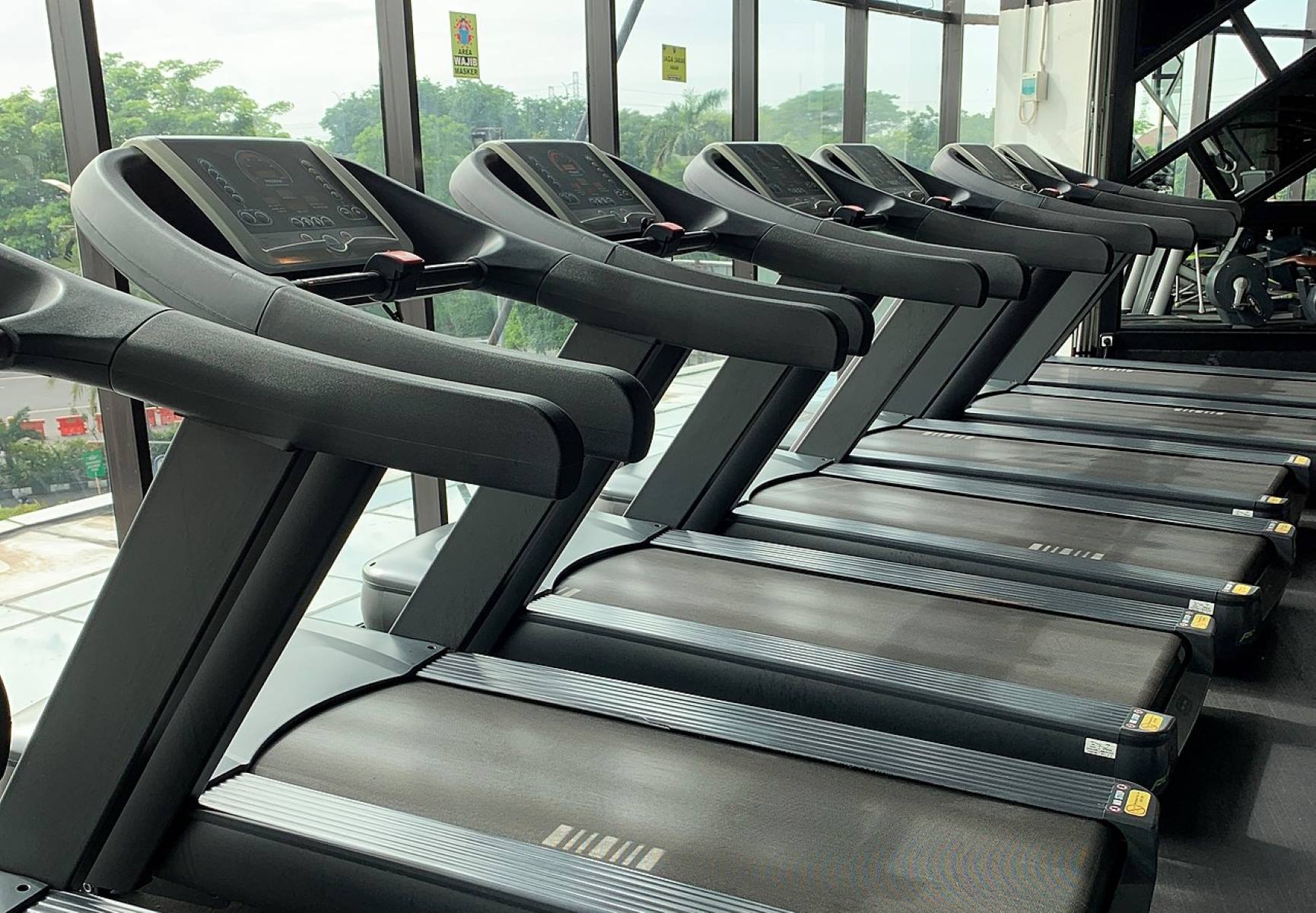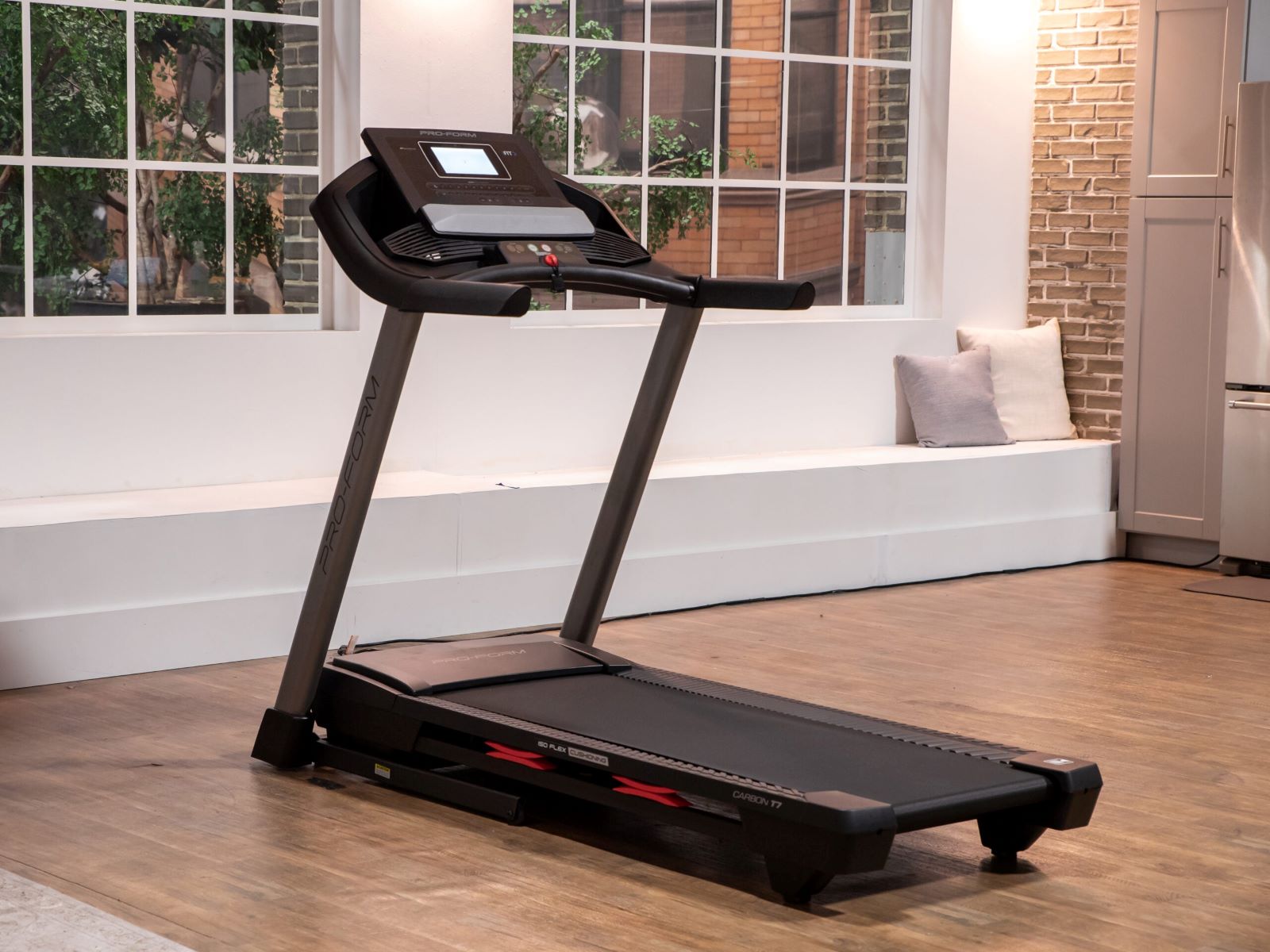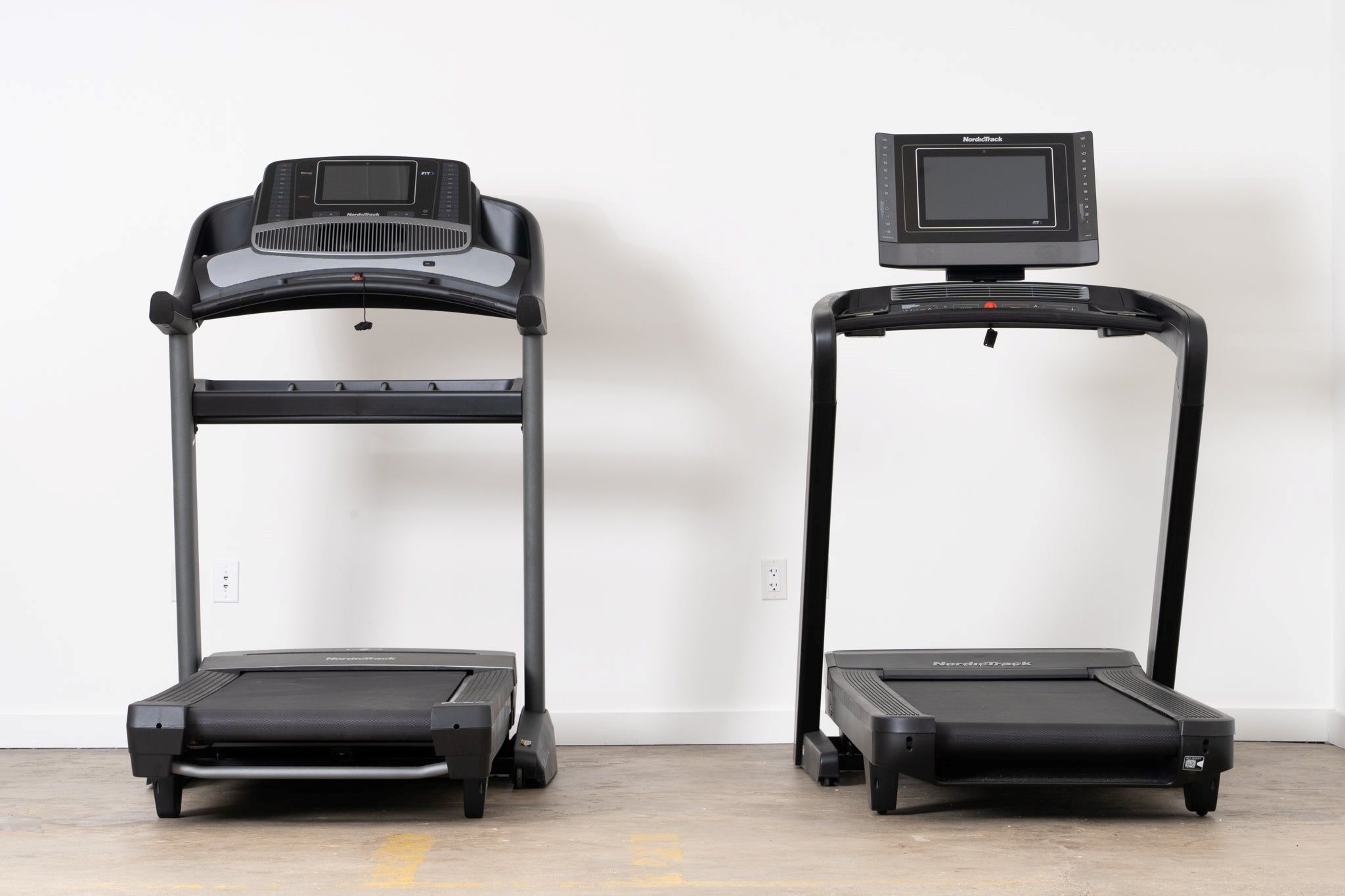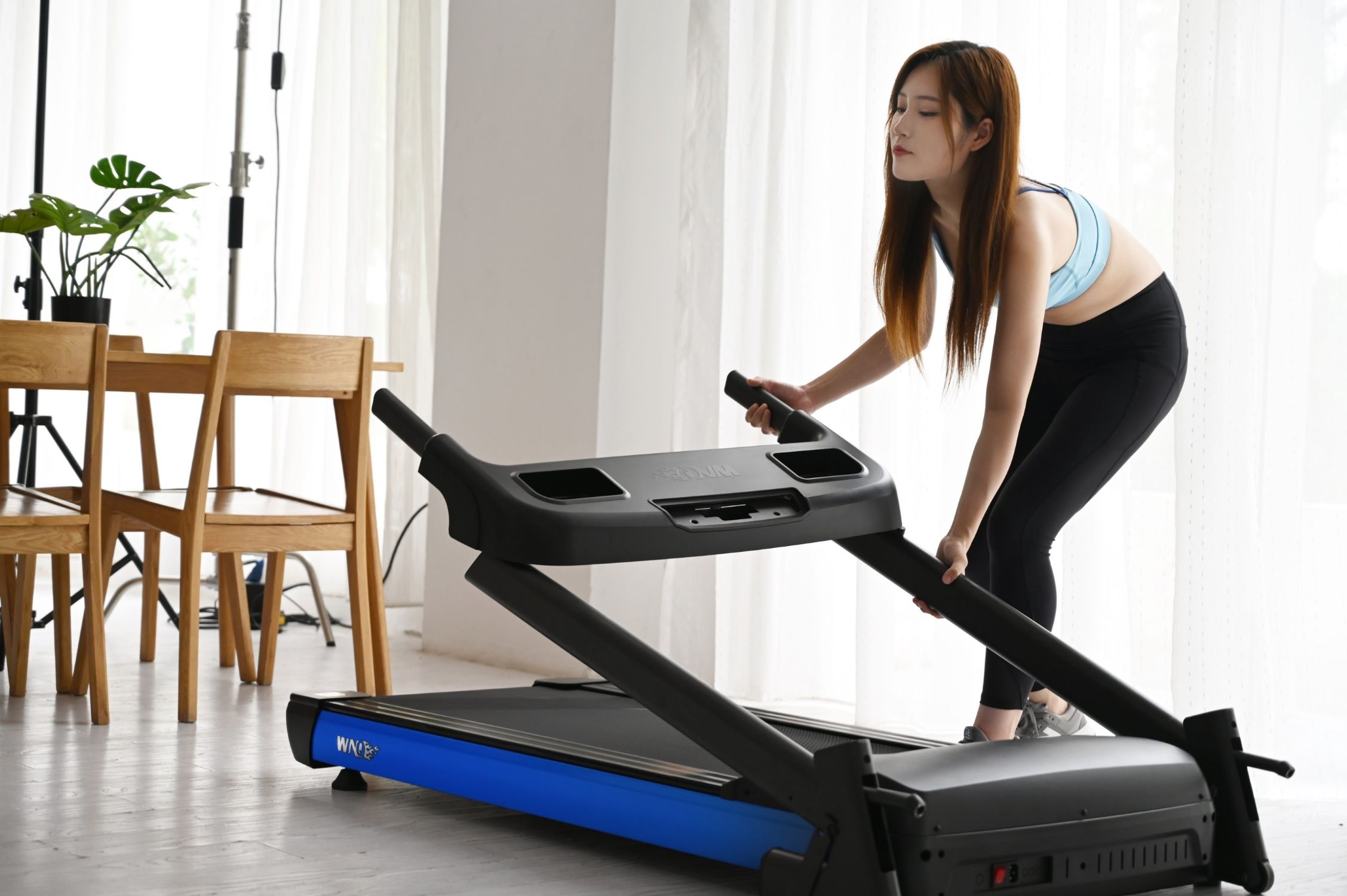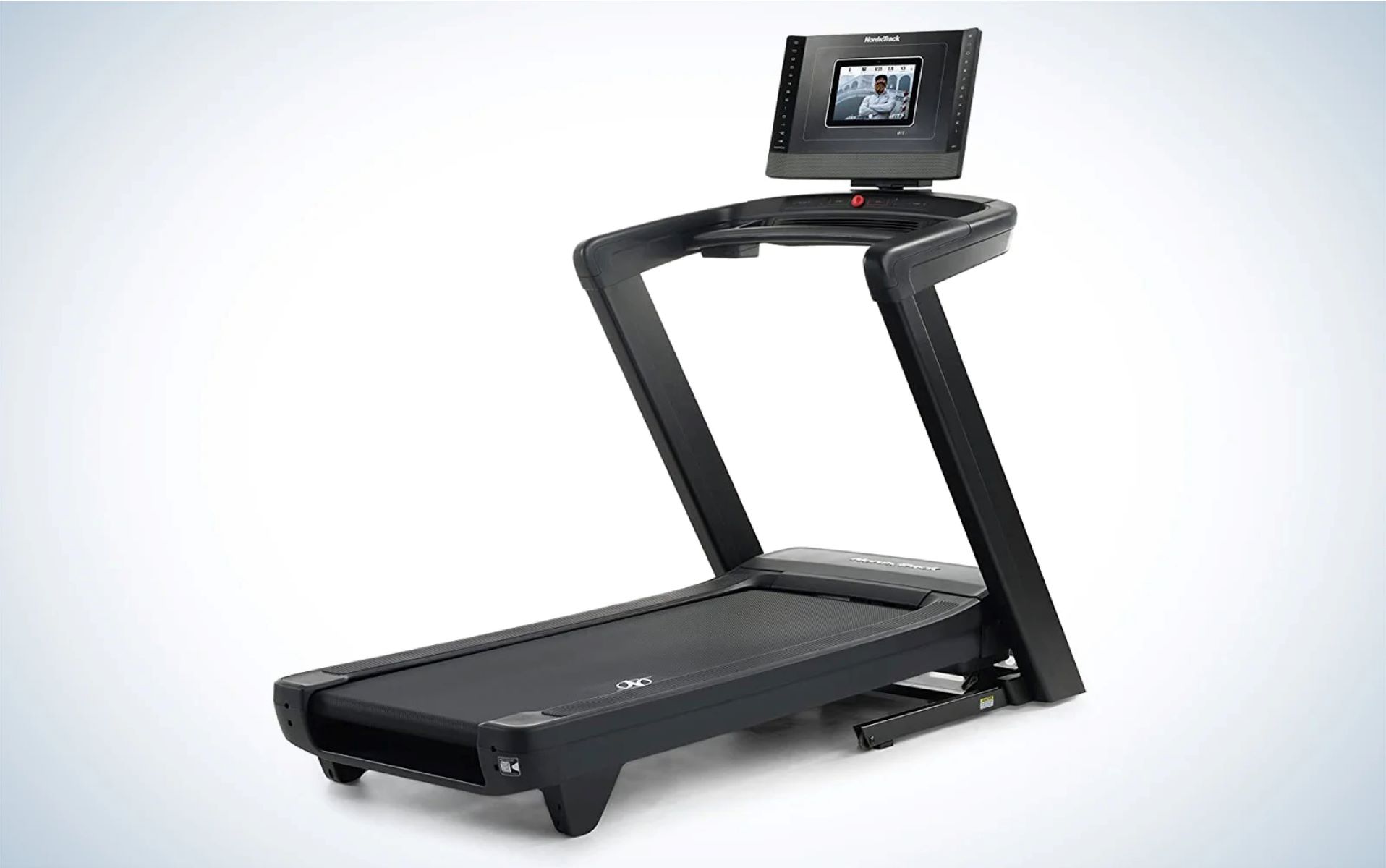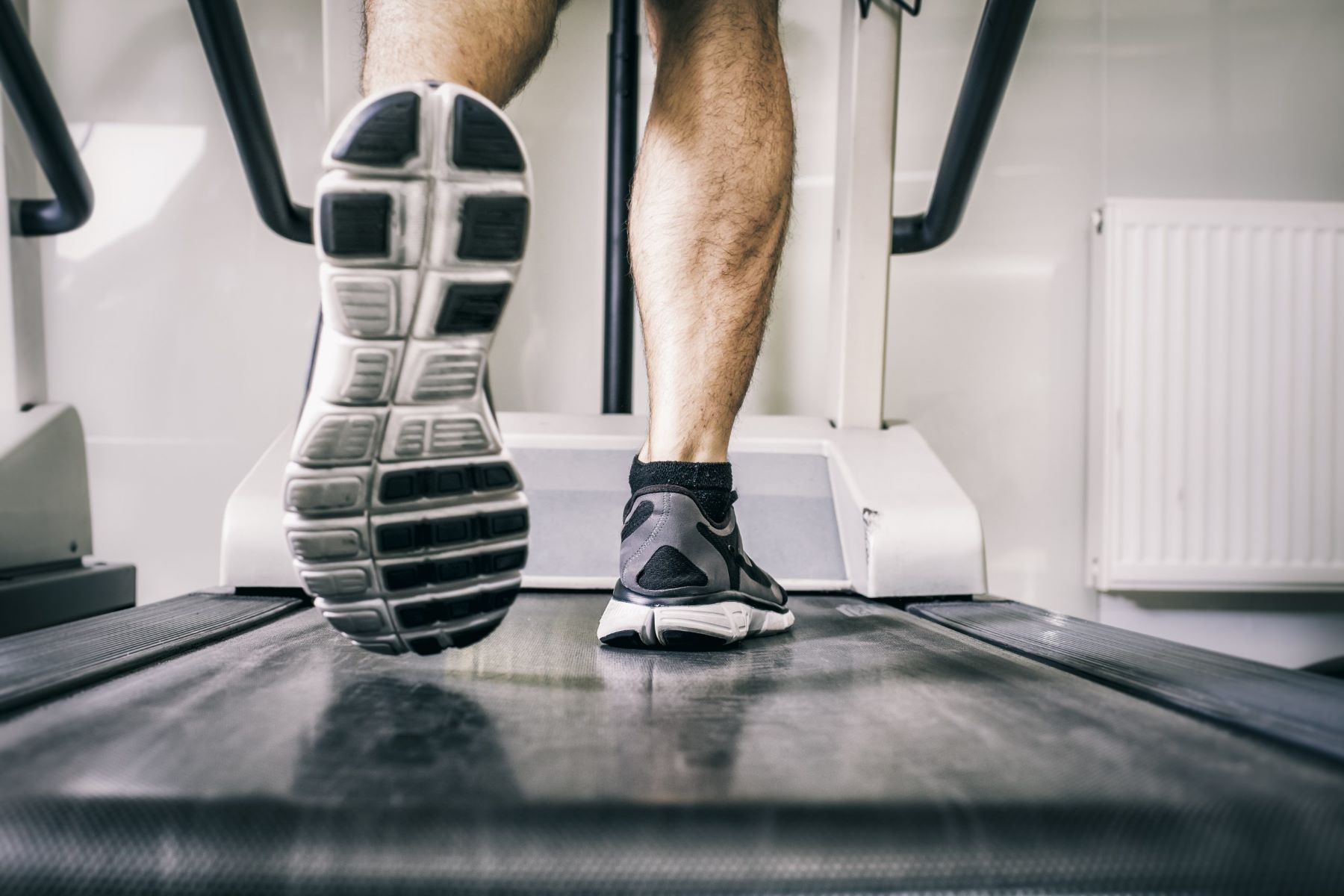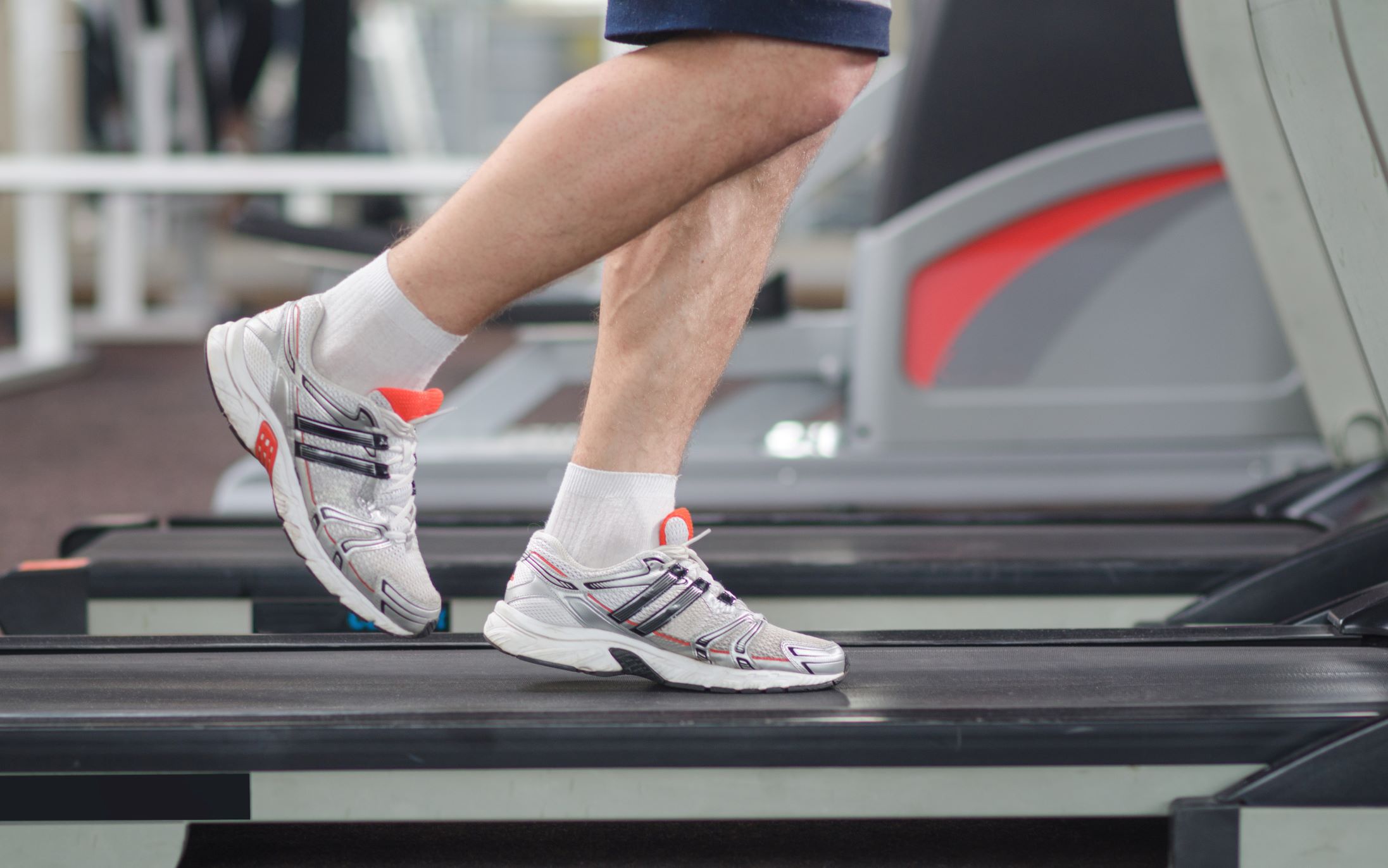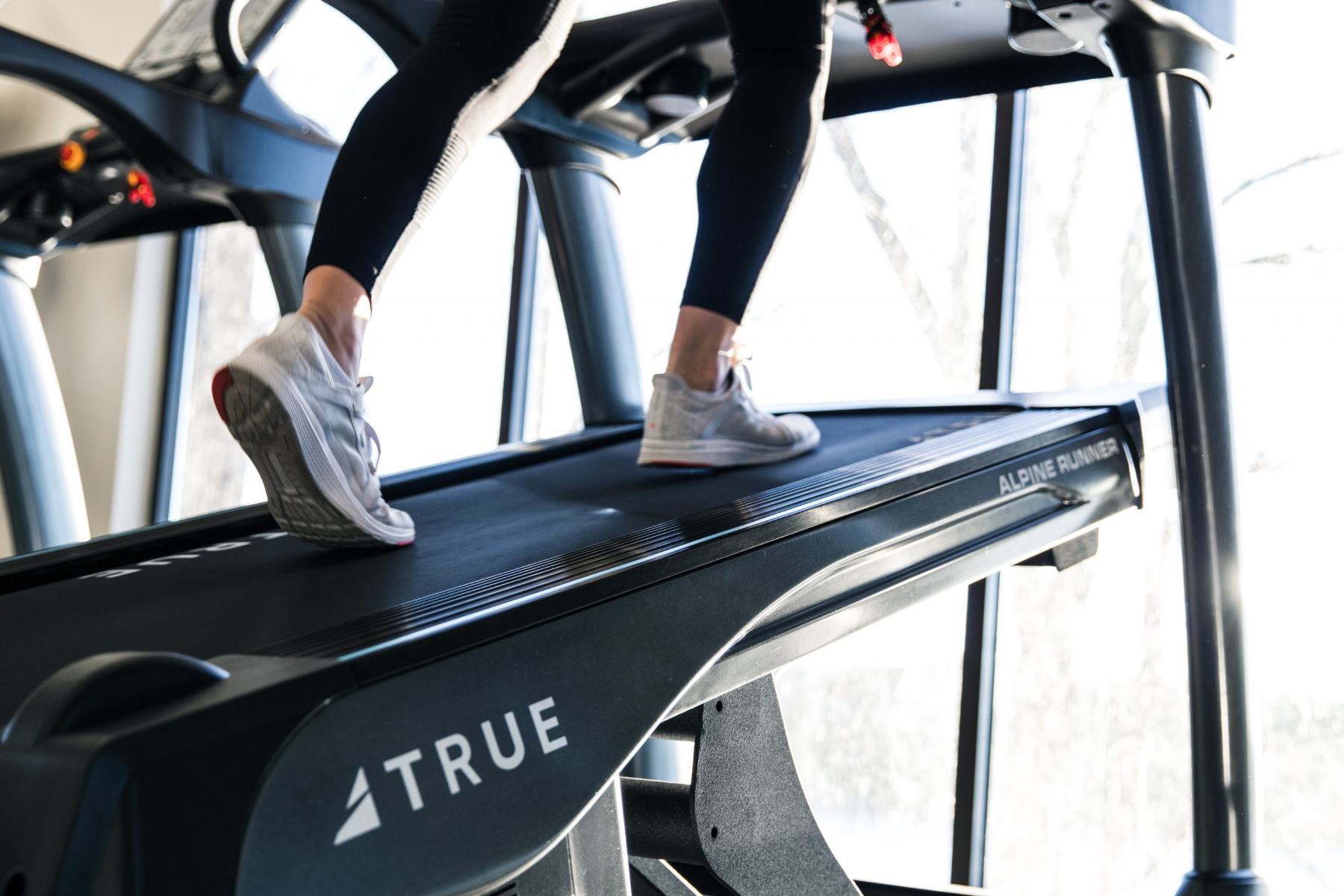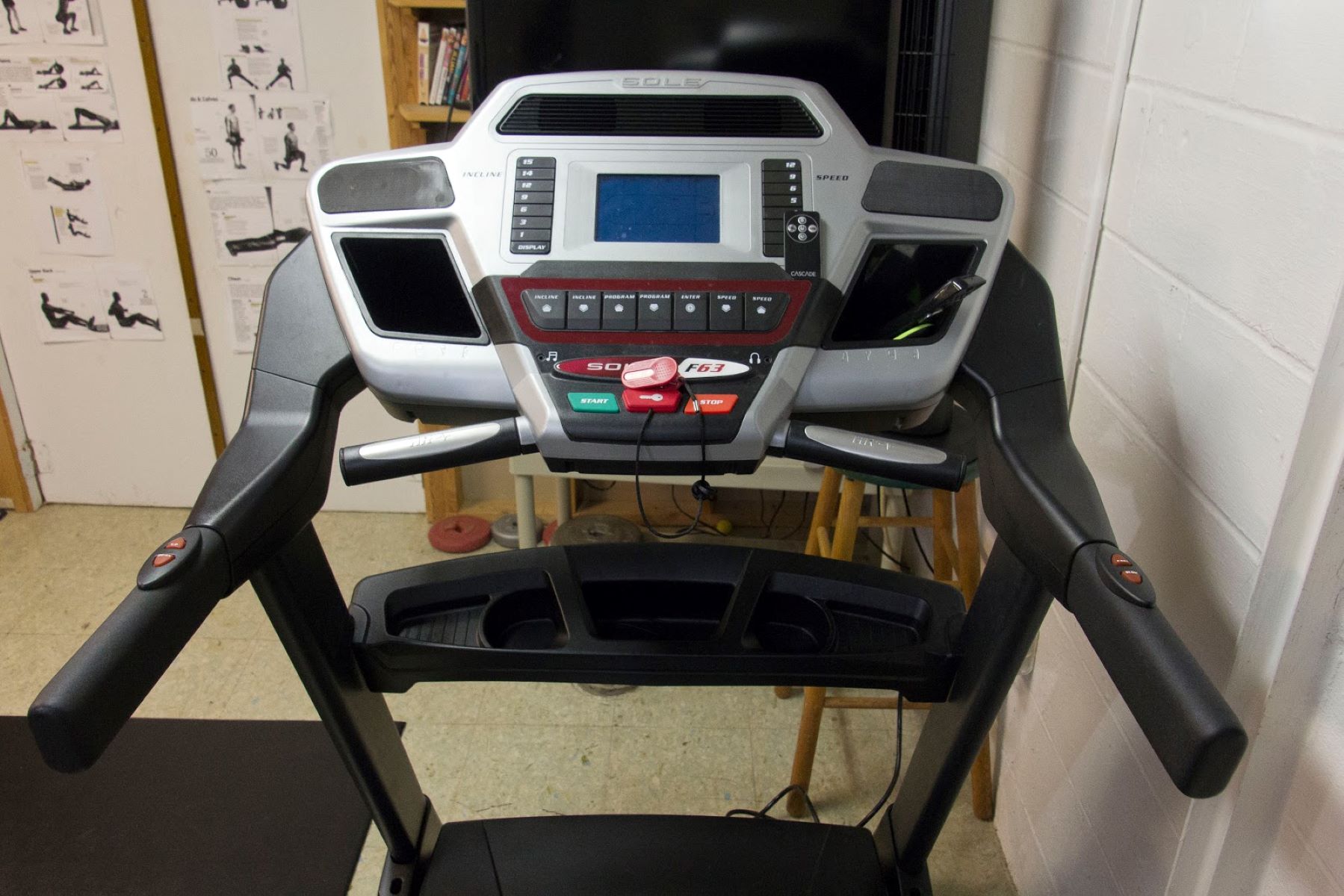

Featured
How To Service A Treadmill
Modified: October 25, 2023
Learn how to service your treadmill with our featured guide. Keep your treadmill running smoothly and extend its lifespan with our step-by-step instructions.
Introduction
Welcome to the world of fitness and wellness! Treadmills have become an essential part of our lives, offering a convenient way to stay active and maintain a healthy lifestyle, right in the comfort of our own homes. However, like any other piece of machinery, treadmills require regular maintenance to ensure optimal performance and longevity.
Properly servicing your treadmill not only extends its lifespan but also enhances your workout experience. Regular maintenance helps to prevent sudden breakdowns and potential injuries caused by worn-out parts or faulty mechanisms. By following a few simple steps and incorporating them into your routine, you can keep your treadmill in top shape and maximize its efficiency.
This comprehensive guide will take you through the process of servicing your treadmill, from safety precautions to troubleshooting common issues. Whether you are a seasoned fitness enthusiast or just starting your fitness journey, this guide will provide you with the knowledge and tools to keep your treadmill running smoothly.
Before we dive into the step-by-step instructions, it’s important to note that every treadmill model is unique, and manufacturers may have specific recommendations for maintenance. It’s highly recommended to consult the user manual or reach out to the manufacturer directly for any model-specific guidelines.
Now, let’s get started on the journey to ensure your treadmill remains in optimal condition. By following these steps, you’ll not only enhance the performance of your treadmill but also maintain its durability for years to come.
Step 1: Safety Precautions
Before we begin servicing the treadmill, it is crucial to prioritize safety. These precautionary measures will ensure your well-being and prevent any accidents during the maintenance process. Here are some important safety precautions to keep in mind:
- Turn off and unplug the treadmill: Before starting any maintenance tasks, make sure to turn off the treadmill and unplug it from the power source. This will prevent any accidental starts or electrical shocks while working on the machine.
- Use protective gear: Wear appropriate protective gear such as gloves and safety glasses to safeguard yourself from any potential injuries. If you are working with lubricants or cleaning chemicals, ensure proper ventilation as per the manufacturer’s recommendations.
- Keep the treadmill area clear: Make sure the area around the treadmill is clear of any obstacles or tripping hazards. This includes removing any loose items, pets, or children from the vicinity to prevent accidents while performing maintenance tasks.
- Read the user manual: Familiarize yourself with the user manual provided by the manufacturer. The manual contains essential safety information and specific guidelines for your treadmill model. Adhere to these guidelines to prevent any damage to the machine and to ensure your own safety.
- Inspect the power cord: Carefully examine the power cord and ensure it is in good condition, without any frays or exposed wires. If you notice any damage, refrain from using the treadmill until a professional can repair or replace the cord.
Following these safety precautions will set the foundation for a smooth and risk-free maintenance process. It is important to prioritize your safety above all else to avoid any potential accidents or injuries during the servicing of your treadmill.
Step 2: Gathering Necessary Tools and Materials
Before we proceed with servicing the treadmill, it’s essential to gather the necessary tools and materials. Having everything prepared beforehand will make the process more efficient and save time. Here are the essential tools and materials you’ll need:
- Clean cloth or towel: A soft, lint-free cloth or towel will be used to wipe down the treadmill and remove dust and debris. It’s important to use a cloth that won’t scratch or damage the surfaces of the treadmill.
- Mild detergent or treadmill cleaning solution: To clean the surface of the treadmill and remove any stubborn dirt or stains, mild detergent or a specifically formulated treadmill cleaning solution will be needed. Avoid using harsh chemicals or abrasive cleaners that can damage the treadmill’s finish.
- Treadmill lubricant: Lubricating the treadmill belt is an essential part of maintenance. Depending on the treadmill type, you may need silicone-based or wax-based lubricant. Refer to the manufacturer’s guidelines or user manual to determine the appropriate lubricant for your specific treadmill model.
- Screwdriver or wrench: Many treadmills require periodic tightening of screws and bolts. Having a screwdriver or wrench handy will allow you to tighten any loose components and ensure the treadmill remains stable and secure during use.
- Spare parts if necessary: Depending on the condition of your treadmill, you may need to replace certain parts such as the belt, motor, or electrical connections. If you anticipate any specific repairs, it’s advisable to have the necessary spare parts on hand.
By gathering these tools and materials in advance, you’ll be well-prepared to tackle each step of the maintenance process. Having everything readily available will save you time and ensure a smooth servicing experience.
Step 3: Cleaning the Treadmill
Keeping your treadmill clean is not only important for hygienic reasons but also for its overall performance. Regular cleaning helps remove dirt, sweat, and dust that can accumulate on the surface and within the components of the treadmill. Follow these steps to effectively clean your treadmill:
- Turn off and unplug the treadmill: Before beginning the cleaning process, ensure that the treadmill is turned off and unplugged. This is for your safety and to avoid any accidental starts.
- Remove any visible debris: Use a soft cloth or towel to wipe away any visible dirt or debris from the surface and corners of the treadmill. Pay attention to areas where dust and grime tend to accumulate, such as the handrails, console, and display panel.
- Prepare a cleaning solution: Mix a small amount of mild detergent with water or use a specifically formulated treadmill cleaning solution. Avoid using harsh chemicals or abrasive cleaners that can damage the treadmill’s finish. Refer to the manufacturer’s guidelines for any specific cleaning recommendations.
- Clean the surface: Dampen the cloth or towel with the cleaning solution and gently wipe down the entire surface of the treadmill, including the handrails, console, and display panel. Be careful not to saturate the cloth or allow moisture to seep into any electrical components. For hard-to-reach areas, use a soft brush or cotton swab to clean out any dirt or grime.
- Wipe down the belt: Use a clean, dry cloth or towel to wipe down the treadmill belt. This will remove any sweat or moisture that may have accumulated during your workouts. Make sure to clean both the top and underside of the belt.
- Dry the treadmill: Once you’ve cleaned all the surfaces, use a dry cloth or towel to thoroughly dry the treadmill. This will prevent any moisture from causing damage or rusting the metal parts.
- Reassemble and power on: After the treadmill is completely dry, reassemble any parts that were taken apart for cleaning. Once everything is back in place, plug in the treadmill and turn it on to ensure that it is functioning properly.
Regular cleaning of your treadmill will not only keep it looking its best but also help maintain its performance and prolong its lifespan. By incorporating this step into your maintenance routine, you’ll ensure that your treadmill remains in optimal condition for long-term use.
Step 4: Lubricating the Belt
Proper lubrication of the treadmill belt is crucial to ensure smooth and efficient operation. Over time, the belt can become dry or worn, resulting in increased friction and potential damage to both the belt and the motor. Follow these steps to effectively lubricate your treadmill belt:
- Refer to the user manual: Consult the user manual for your specific treadmill model to determine the type of lubricant recommended by the manufacturer. Some treadmills require silicone-based lubricants, while others may require wax-based lubricants. It’s important to use the correct type of lubricant to avoid any potential damage to the belt or motor.
- Turn off and unplug the treadmill: Before lubricating the belt, make sure the treadmill is turned off and unplugged. This not only ensures your safety but also prevents any accidental starts while working on the machine.
- Locate the belt adjustment screws: Most treadmills have belt adjustment screws located at the rear end of the machine. Consult the user manual or manufacturer’s instructions to locate these screws. They are usually accessible by removing a plastic cover or hood.
- Loosen the belt: Use an appropriate screwdriver or Allen wrench to loosen the belt adjustment screws. This will allow you to easily lift the belt and access the area underneath. Be cautious not to loosen the screws too much, as this can cause the belt to slip or become misaligned.
- Apply lubricant: Following the manufacturer’s instructions, apply the appropriate amount of lubricant to the center of the belt. Use a clean cloth or applicator provided with the lubricant to evenly spread the lubricant along the length of the belt. Avoid applying excessive lubricant as this can lead to an overly slippery surface.
- Adjust and center the belt: After applying the lubricant, carefully lower the belt back into place. Use the belt adjustment screws to tighten the belt, ensuring it is properly aligned and centered. The belt should be taut but still allow for a slight amount of tension when pushed with your finger. Refer to the user manual for specific guidelines regarding belt tension adjustment.
- Turn on and test: Once the belt is properly adjusted and centered, plug in the treadmill and turn it on. Let the treadmill run at a slow speed for a few minutes to evenly distribute the lubricant along the belt. This will help optimize its performance.
Regularly lubricating the treadmill belt will reduce friction, minimize wear and tear, and promote a smooth and quiet operation. Remember to consult the user manual for any specific instructions or recommendations from the manufacturer regarding the lubrication process.
Step 5: Inspecting and Tightening the Screws and Bolts
Ensuring that all screws and bolts on your treadmill are properly tightened is essential for maintaining its stability and preventing potential issues during use. Over time, vibrations and regular wear and tear can cause these components to become loose. Follow these steps to inspect and tighten the screws and bolts on your treadmill:
- Turn off and unplug the treadmill: Before inspecting and tightening any screws or bolts, make sure the treadmill is turned off and unplugged. This is important for your safety and to prevent any accidental starts while working on the machine.
- Locate the screws and bolts: Refer to the user manual or manufacturer’s instructions to identify the different screws and bolts on your treadmill. They are typically found on the frame, handrails, console, and motor cover.
- Inspect for loose components: Carefully examine each screw and bolt to check for any signs of looseness. Use a screwdriver or wrench to gently tighten any components that appear to be loose. Avoid overtightening, as this can potentially damage the treadmill’s frame or cause bolts to break.
- Pay attention to critical areas: Focus on critical areas such as the motor mounts, frame connections, and handrail attachments. These areas experience the most stress during use and are more likely to require regular tightening.
- Check for damaged or worn screws: In addition to tightening, inspect all screws and bolts for any signs of damage or wear. If any components appear stripped or damaged, consider replacing them with new ones to ensure proper functionality.
- Recheck all components: Once you have tightened and inspected all screws and bolts, go back and double-check to ensure that nothing has been overlooked or missed. This thorough inspection will provide added assurance that the treadmill is secure and safe to use.
- Regularly perform maintenance checks: It’s recommended to schedule regular maintenance checks of your treadmill to ensure that screws and bolts remain tight. Depending on the frequency and intensity of use, you may need to repeat this step every few months or as necessary.
Inspecting and tightening the screws and bolts on your treadmill not only prevents excessive movement and noise during workouts but also ensures the overall stability and integrity of the machine. By incorporating this step into your maintenance routine, you’ll be able to enjoy a safer and more reliable treadmill experience.
Step 6: Checking the Motor and Electrical Connections
The motor is the heart of a treadmill, and ensuring its proper functioning is crucial for a smooth and efficient workout. Additionally, inspecting the electrical connections helps prevent any potential issues or malfunctions. Follow these steps to effectively check the motor and electrical connections:
- Turn off and unplug the treadmill: Before inspecting the motor and electrical connections, ensure that the treadmill is turned off and unplugged. This is to guarantee your safety and prevent any potential electrical shocks.
- Access the motor compartment: Refer to the user manual or manufacturer’s instructions to locate the motor compartment of your treadmill. It is usually located at the front or rear end of the machine and can be accessed by removing a cover or panel.
- Inspect the motor: Carefully examine the motor for any signs of damage, such as frayed wires or burnt components. Check for loose connections or wires that may need to be reattached or tightened. If you notice any significant damage, it is advisable to seek professional assistance for repair or replacement.
- Check electrical connections: Inspect the electrical connections within the motor compartment for any loose or disconnected wires. Ensure that all connections are secure and properly plugged in. If you find any loose connections, gently reattach them or tighten them to ensure a secure fit.
- Examine the power cord: Inspect the power cord for any visible damage, such as fraying or exposed wires. If you notice any issues, refrain from using the treadmill and seek professional assistance to repair or replace the power cord.
- Clean the motor compartment: Use a soft brush or cloth to remove any dust or debris that may have accumulated within the motor compartment. Ensure the area is clean to prevent any potential interference with the motor’s operation.
- Replace the motor cover: Once you have inspected the motor and electrical connections, securely replace the motor cover or panel. Ensure that it is properly aligned and tightly secured to protect the motor and electrical components.
- Turn on and test: After checking the motor and electrical connections, plug in the treadmill and turn it on. Pay attention to any unusual noises or vibrations during the initial startup. Let the treadmill run at a low speed for a few minutes to ensure that the motor is functioning properly.
Regularly checking the motor and electrical connections of your treadmill helps guarantee its safe and efficient operation. By incorporating this step into your maintenance routine, you can identify potential issues early on and take the necessary steps to address them, ensuring a long-lasting and reliable treadmill.
Step 7: Calibrating the Treadmill
Calibrating your treadmill is an essential step to ensure accurate speed and incline readings, providing you with a precise and enjoyable workout experience. Over time, the calibration of the treadmill may become slightly inaccurate due to various factors. Follow these steps to effectively calibrate your treadmill:
- Turn off and unplug the treadmill: Before calibrating the treadmill, make sure it is turned off and unplugged. This ensures your safety and prevents any accidental starts during the calibration process.
- Check the user manual: Refer to the user manual or manufacturer’s instructions to determine the specific calibration process for your treadmill model. Each treadmill may have a slightly different procedure, so it’s important to follow the guidelines provided.
- Access the calibration mode: Depending on your treadmill model, you may need to access the calibration mode through the console or control panel. Consult the user manual to determine the specific steps for entering calibration mode.
- Select the calibration program: Once you’re in the calibration mode, follow the instructions provided on the display to select the calibration program. This program will guide the treadmill through a series of speed and incline adjustments to ensure accurate readings.
- Observe the calibration process: Pay close attention to the treadmill as it goes through the calibration program. Note any adjustments made to the speed and incline settings and ensure that they are accurately reflected on the display.
- Make manual adjustments if necessary: If you notice any significant discrepancies between the actual speed or incline and the displayed readings during the calibration process, you may need to make manual adjustments. Refer to the user manual for instructions on how to fine-tune the speed and incline settings.
- Complete the calibration process: Follow the instructions provided on the display to complete the calibration process. This may involve running or walking on the treadmill at different speeds and inclines to further fine-tune the readings.
- Verify accuracy: After completing the calibration process, perform a quick test by running or walking on the treadmill at various speeds and inclines. Ensure that the displayed readings accurately correspond to your actual performance.
Calibrating your treadmill periodically ensures precise speed and incline measurements, allowing you to track your progress accurately during your workouts. Remember to consult the user manual or manufacturer’s instructions for specific guidance on the calibration process for your treadmill model.
Step 8: Testing the Treadmill
After completing the necessary maintenance tasks, it’s important to thoroughly test your treadmill to ensure that all components are functioning properly. Testing the treadmill not only gives you peace of mind but also helps identify any potential issues that might have been overlooked. Follow these steps to effectively test your treadmill:
- Turn off and unplug the treadmill: Before conducting any tests, make sure the treadmill is turned off and unplugged. This guarantees your safety and avoids any accidental starts or electrical shocks.
- Perform a visual inspection: Take a moment to visually inspect the treadmill, paying attention to any loose parts, frayed wires, or signs of damage. Ensure all components are properly connected and secure.
- Power on the treadmill: Plug in the treadmill and turn it on. Allow it to boot up and enter the standby or ready mode. Check that the display and console are functioning properly and that all buttons and controls are responsive.
- Test the speed settings: Set the treadmill to various speeds, starting with a slow pace and gradually increasing to higher speeds. Make sure that the belt moves smoothly and consistently without any sudden jerks or pauses. Use the console or display to verify that the speed readings match your intended settings.
- Adjust the incline settings: If your treadmill has an incline feature, test the different incline levels. Ensure that the mechanism operates smoothly and that the incline changes correspond accurately to the displayed readings.
- Check the safety features: Activate the treadmill’s safety features, such as the emergency stop button or safety clip. Test that these features immediately stop the belt when activated, ensuring your safety during workouts.
- Monitor the noise level: Listen for any abnormal or excessive noise while the treadmill is in operation. Though some level of noise is normal, any loud or unusual sounds could indicate an issue that needs to be addressed.
- Observe the overall stability: Pay attention to the stability of the treadmill while walking or running on it. Ensure that it remains sturdy and doesn’t wobble excessively during use.
- Take note of any abnormalities: If you notice any abnormalities or issues during the testing process, document them for further investigation or potential repairs. This will help you address any problems promptly.
Thoroughly testing your treadmill after maintenance tasks allows you to confirm that all components are in proper working condition. It is recommended to conduct these tests periodically to ensure the continued performance and safety of your treadmill.
Step 9: Troubleshooting Common Issues
Even with regular maintenance and proper care, treadmills can occasionally encounter issues. It’s important to be familiar with common problems and their potential solutions to keep your treadmill running smoothly. Here are some troubleshooting steps for common treadmill issues:
- Treadmill not turning on: If your treadmill doesn’t turn on, check if it’s properly plugged into a power source and that the power cord is not damaged. Also, verify that the safety key is securely in place. If the problem persists, consult the user manual or contact customer support.
- Belt slipping or sliding: If you experience belt slipping or sliding, first check if the belt is properly aligned and centered. Adjust the tension of the belt according to the user manual’s guidelines. If the issue persists, it may be necessary to lubricate the belt or replace it altogether.
- Noise during operation: Unusual noises during treadmill operation can be caused by loose or worn-out components. Tighten any loose screws or bolts and inspect the motor cover for any loose or damaged parts. If the noise continues, contact the manufacturer or a professional for further assistance.
- Inaccurate speed or incline readings: If you notice discrepancies in speed or incline readings, calibrate the treadmill using the steps outlined in the calibration section. Follow the user manual’s instructions for your specific model to ensure accurate measurements.
- Uneven belt tension: If the treadmill belt is unevenly tensioned, adjust the tension screws located at the rear end of the machine. Use a screwdriver or Allen wrench to make small adjustments until the belt is evenly tensioned on both sides.
- Console or display issues: If your treadmill’s console or display is not functioning properly, first ensure that all connections are secure. Reset the console if possible, and check for any error messages. If the issue persists, contact customer support for further assistance.
- Electrical problems or tripping circuit breaker: If your treadmill trips the circuit breaker or experiences electrical problems, unplug it and do not attempt to use it. Contact a qualified electrician to inspect the electrical circuit or consult the manufacturer for guidance.
- Excessive vibration or shaking: If your treadmill vibrates excessively during use, check that the machine is on a level and stable surface. Ensure that the feet or leveling screws are properly adjusted to eliminate any wobbling. Tighten any loose screws or bolts that connect the frame and motor mounts.
- Excessive belt wear or fraying: If you notice significant belt wear or fraying, it may be time to replace the belt. Refer to the user manual for guidance on proper belt replacement procedures or contact the manufacturer for further assistance.
- Unresponsive buttons or controls: If the buttons or controls on your treadmill are unresponsive, check if they are properly connected and clear of any debris. Clean around the buttons and controls using a soft cloth or compressed air. If the issue persists, contact customer support for guidance.
Remember, if you encounter persistent issues with your treadmill that you are unable to resolve, it’s always best to seek professional assistance. This will ensure that the treadmill is repaired correctly and prevent further damage.
Conclusion
Congratulations! You have successfully learned how to service your treadmill and keep it in optimal condition. By following these step-by-step instructions, you can maintain the performance, safety, and longevity of your treadmill.
Regular maintenance of your treadmill is essential to ensure smooth and efficient operation. From taking safety precautions to cleaning the treadmill, lubricating the belt, inspecting and tightening screws and bolts, checking the motor and electrical connections, calibrating the machine, testing its functionality, and troubleshooting common issues, each step plays a vital role in keeping your treadmill running smoothly and providing you with a reliable workout experience.
Remember to consult the user manual provided by the manufacturer for any specific guidelines or recommendations tailored to your treadmill model. Manufacturers often provide valuable insights and specific instructions for maintenance tasks.
By dedicating a bit of time and effort to your treadmill’s maintenance, you can enjoy a safer, more efficient, and comfortable exercising experience. It’s important to incorporate regular maintenance checks into your routine and address any issues promptly to prevent further damage or expensive repairs.
So, go ahead and put your newfound knowledge into action. Service your treadmill regularly, and enjoy the benefits of a well-maintained and reliable fitness companion that will support you on your fitness journey for years to come.
